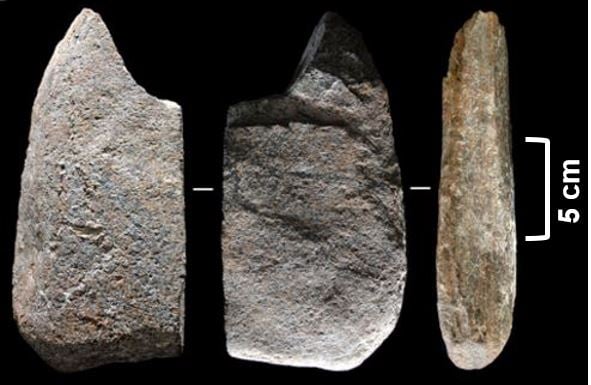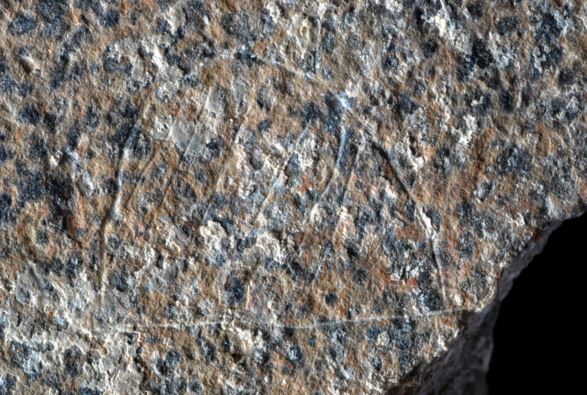Hunter-gatherer campsites depicted in a 13,800 year-old schist slab engraving have been discovered in northeastern Spain, according to scientists from the Catalan Institute of Human Paleoecology and Social Evolution and the University of the Basque Country.
Manuel Vaquero, who works at the Catalan Institute of Human Paleoecology and Social Evolution, believes this Paleolithic engraving from northeastern Spain “brings us the first representation of a human social group.”
The researchers wrote about their finding in the open-access journal PLOS ONE.
 Photograph of the engraved schist slab from Molí del Salt. (Image: PLOS ONE)
Photograph of the engraved schist slab from Molí del Salt. (Image: PLOS ONE)
Features of the everyday world plus landscapes are very rarely represented in Paleolithic art. Paleolithic refers to a period from 2.6 million years ago to the end of the Pleistocene around 10,000 BP.
The study authors analyzed the shape (morphology) of an engraved schist slab that was recently found in the Molí del Salt site in northeastern Spain, dated around 13,800 years ago; to the end of the Upper Paleolithic period.
Seven motifs probably represent huts
The schist slab contains seven engraved semicircular motifs (decorative designs) with internal lines arranged in two rows.
Because of their morphology and proportions, the researchers believe the motifs were designed to represent huts. Microscopic and comparative analyses suggest that all seven motifs were engraved using a similar technique and instrument over a very short period.
 Location of Molí del Salt in Northeastern Iberian Peninsula. (Image: PLOS ONE)
Location of Molí del Salt in Northeastern Iberian Peninsula. (Image: PLOS ONE)
After analyzing each individual motif, composition, as well as the archaeological and ethnographic contextualization, the researchers believe the engraving is a depiction of a hunter-gatherer campsite.
Although they cannot be sure of what the engraving is trying to depict, Mr. Vaquero and Marcos García-Diez, from University of the Basque Country, believe it may be one of the first representations of domestic and social space of a human group.
 A close-up of a motif. (Image: Eurekalert. Credit: García-Diez et al)
A close-up of a motif. (Image: Eurekalert. Credit: García-Diez et al)
In an Abstract in the journal, the authors concluded:
“Campsites can be considered the first human landscape, the first area of land whose visible features were entirely constructed by humans.”
“Given the social meaning of campsites in hunter-gatherer life-styles, this engraving may be considered one of the first representations of the domestic and social space of a human group.”
Citation: “Looking at the Camp: Paleolithic Depiction of a Hunter-Gatherer Campsite,” Marcos García-Diez and Manuel Vaquero. PLOS ONE. December 2, 2015. DOI: 10.1371/journal.pone.0143002.
